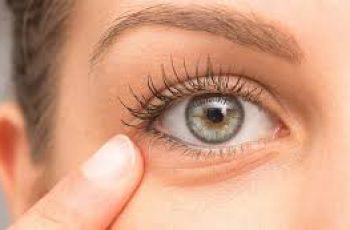Which oil is best for your hair?
We’re all searching for a product that will make our hair look shiny, bouncy, and healthy, and not too long ago, the only way to achieve that was to go to the hairdresser. Luckily for us, hair oil has become a big thing, as many haircare brands are searching for the most nourishing, high-performing formulas to give us shiny hair worthy of a Disney princess. There’s only one question left: which oil is best for your hair? We’re looking at just that today.
Is oil good for your hair?
It really all depends on your hair type and its condition. By applying hair oil, you’ll help nourish and restore strands, as well as give them a natural shine. Those with curly, thicker, and drier hair will notice a real difference in manageability and appearance.
Curly hair – This hairstyle can sometimes be a little too drying. Applying hair oil to curly hair can hydrate the curls, making them smoother and making them easier to tame and style.
Fine hair – Fine hair can really benefit from using hair oil. Apply oil to the mid-lengths and ends of your hair, avoiding the roots, as the product can weigh down strands and make them look greasy.
Dry Hair – It goes without saying that dry hair loves oils to volumize, smooth, moisturize, and restore health.
Oily Hair – Applying oil to oily hair may sound counterproductive, but applying product to the ends of your hair will encourage hair growth and prevent breakage.
As you can see, many hair types find that oils can regrow curls, making them more manageable, stronger, and more beautiful.
What happens if we don’t oil our hair?
Hair produces a natural oil that is the same sebum found in our skin. It works to condition the hair and keep the hair and scalp healthy while preventing dandruff and hair loss. To support sebum production, it’s best to comb your hair regularly, which transfers oil from your scalp into your hair strands. This distribution of sebum is good for your hair, but it’s always a good idea to add extra products to your routine for a number of reasons.
Applying oils can regulate your hair’s sebum production and prevent your scalp from becoming dry and itchy.
By massaging the oil into your scalp, you will also notice that hair growth improves and your hair becomes moisturized, thicker, and shinier.
Dandruff issues can also be prevented by massaging hair oil into your scalp to stimulate blood circulation and keep your hair healthy.
These are some of the hair care benefits you can expect when you use the different oils available in the market. You will also notice that your hair falls out less and issues like split ends are significantly less noticeable.
Which oil is best for my hair?
Here are some of the key oils in the most popular hair care product formulas. They can be used as an additional ingredient or in their original form.
Coconut Oil
The benefits of coconut oil for hair care are numerous: it boosts scalp health, stimulates hair growth, and even protects your hair from heat damage caused by regular styling.
Suitable for: All hair types, especially dry, damaged, and dull hair.
Argan Oil
Also known as the liquid gold of Morocco, Argan oil is the first oil to create a national obsession. This ingenious oil protects hair from UV rays and heat damage. It straightens hair, making it easier to style and feeling super soft.
Best for: Dry, brittle, frizzy hair that is often exposed to heat. If you have oily roots and dry ends, this oil is best for you.
Jojoba Oil
Jojoba oil is very moisturizing and nourishes the hair from the roots to the ends. It also prevents dandruff and dry, itchy scalp.
Great for dry, damaged, and dull hair that may have issues with dandruff and itchy scalp.
You will find most of these oils in hair care products as they have several hair regenerating properties. Other oils used include olive oil, sweet almond oil, lavender oil, and grapeseed oil, all of which produce similar effects and make hair look thick, nourished, and shiny.
Should I oil my hair every day?
While oils are good for hair, using too much can actually damage it. The ideal amount is to apply oil once or twice a week as this helps to maintain a balance between the scalp and hair. Applying hair oil to the scalp tissue every day can lead to a buildup of dirt and bacteria and interfere with the hair’s natural oil production, which can lead to increased hair loss. Using hair oil regularly can make your hair look and feel great.
How long should I leave oil in my hair?
This is completely up to you and your schedule. With a very nourishing oil like jojoba, you can leave the product in your hair for about 10 to 20 minutes. It instantly moisturizes curls and tames stray hairs. You can also leave the oil in your hair overnight. It’s great for rough, dry, and damaged hair because it regrows strands, smoothes follicles, and gives hair a natural shine. Just be sure to protect your pillowcase from residue!
Now you know a little more about which oil is best for your hair type and the damage caused by daily styling. You’ll have commercial-grade, gorgeous hair in no time!
DQH Can I use salicylic acid first and then vitamin C?
It’s easy to create a skincare routine, but knowing how to use it is another thing entirely. In most cases, if you’re not getting the desired skin results, it could be due to the layering of conflicting ingredients. So, is it possible that salicylic acid and vitamin C are such ingredients? Or are these active ingredients the duo that’s been missing from your skincare routine? If you want answers, stick around because today we are going to explain the benefits of salicylic acid and vitamin C and how they can be used in your daily life.
What are the benefits of salicylic acid for skin?
Salicylic acid is one of the most commonly used beta hydroxy acids and is favored by many people with oily, acne-prone skin. This acid is derived from willow bark, and unlike its water-soluble relatives (called alpha-hydroxy acids), salicylic acid is oil-soluble, which means it can penetrate deeper into the lower layers of the skin. Once it reaches the lower layers, it can help unclog pores of excess sebum, dirt, bacteria, debris, and impurities. This results in clearer skin tones and greater definition.
Not only does salicylic acid benefit the underlying layers, but the outer surface of the skin benefits as well. When applied to the skin, salicylic acid removes the buildup of dead skin cells. This is accomplished by breaking the bonds that hold dead cells to the surface. Over time, this can cause the complexion to look dull and prone to acne, blackheads, and other blemishes.
If you’d like to learn more about salicylic acid and how it can improve your skin, check out this dedicated blog post from a beauty insider.
What are the benefits of vitamin C for skin?
Vitamin C is considered one of the most powerful antioxidants, which means it is very effective at fighting free radicals and preventing them from causing further skin damage. Examples of free radicals include pollution, central heating, UV rays and harsh climate. They attack proteins, fats and cell membranes as soon as they come into contact with the skin, causing signs of premature aging such as fine lines and wrinkles as well as hyperpigmentation, flaky patches of skin and loss of elasticity.
Many people usually prefer to use vitamin C in their morning routine as this ingredient gives the complexion a radiant glow. You’ll also find that vitamin C can target areas of hyperpigmentation, plumping the skin and reducing the appearance of fine lines and wrinkles.
The thing about vitamin C is that there are a lot of outdated studies going back to the 1950s that describe vitamin C as an unstable skin component. Thanks to improvements in modern technology, this is no longer the case as all products now contain a stable form of vitamin C.
Visit The Beauty Insider to learn more about vitamin C. So please check out our blog post.
Can I use salicylic acid first and then vitamin C?
Yes, you absolutely can. In fact, it’s thought that using salicylic acid before using vitamin C ensures it penetrates faster and works faster.
This is an efficient way to utilize two power sources, and the reason has to do with pH. For example, the skin’s natural pH is about 4.7, making it slightly acidic. Salicylic acid and vitamin C are also both acidic, and you’ll find that vitamin C is absorbed quickly into the skin. Therefore, using salicylic acid beforehand can increase the acidity of the skin and allow vitamin C to penetrate into the skin faster.
While this is considered an effective way to combine two powerful ingredients, you need to be aware of your skin type and how it reacts to certain active ingredients. Even people with perfect, normal skin can experience skin sensitivity and irritation. Therefore, always consult a doctor or dermatologist before using any new products on your skin.
It’s also important to follow skin application rules. In this case, you need to use the product correctly to ensure you get the best results for your skin. If you’re not sure what I mean, the basic rule for skin is to start with the thinnest consistency and work your way up to the thickest consistency. This prevents a barrier from forming on the surface, preventing other active ingredients from penetrating the skin.
Can I use salicylic acid at night and vitamin C in the morning?
Yes, absolutely, this is considered the most effective way to get returns without any adverse side effects. This is because there is enough time between applications to ensure that the skin’s pH levels return to balance.
You’ll also find that Vitamin C is rich in antioxidants and is perfect for use in the morning to ensure your skin is protected and looking its healthiest. Due to the small size of salicylic acid molecules, it is an acid that is able to reach the deepest parts of the skin. While this is effective at keeping skin clear, it also increases the risk of irritation and photosensitivity. Therefore, many people prefer to use powerful BHAs in their evening routine without exposure to UV rays, pollution, or harsh weather.
Warning: If you avoid using sunscreen every day, none of these ingredients will do what your skin needs. The combination of chemical peels and powerful ingredients increases the risk of further damage to the skin’s surface. Use SPF 50 every day to keep your skin protected and your lipid barrier healthy, even on cloudy days, keeping your skin in top condition.



